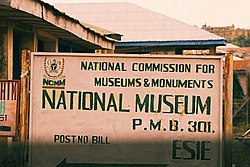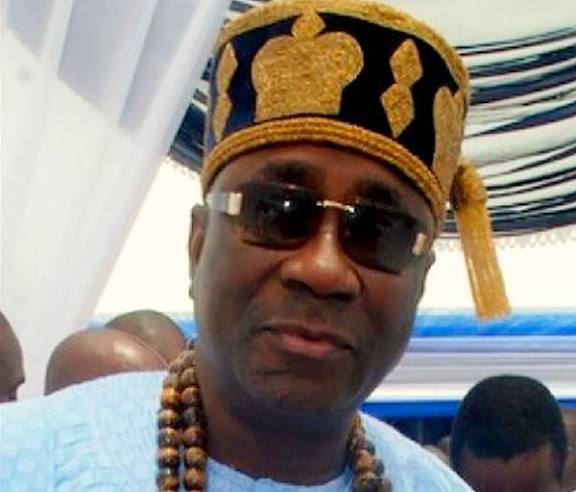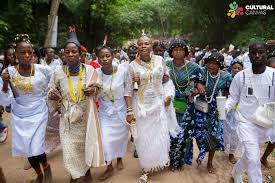Introduction
Esie Museum, located in Esie town in Kwara State, Nigeria, is one of the most fascinating historical sites in West Africa. Renowned for its remarkable collection of ancient stone figures, the museum is widely regarded as the first museum in Nigeria. The origin of these stone figures, numbering over a thousand, has intrigued historians, archaeologists, and anthropologists for decades. This blog post delves into the history of Esie Museum, its significance, key personalities, and its impact on Nigerian cultural heritage.
The Origins of Esie Museum
The Esie Museum was established in 1945 by the British colonial government to preserve and showcase a unique set of stone sculptures discovered in the town of Esie. The museum houses one of the largest collections of stone carvings in Africa, believed to date back several centuries, possibly as far as the 12th to 15th century.
According to oral tradition, the stone figures represent an ancient group of people who were mysteriously turned into stone. Some accounts suggest that they were an early civilization that lived in the region before being cursed by the gods due to their transgressions. While there is no definitive explanation for their origin, modern archaeologists believe they were created by an unknown civilization with advanced artistic and sculpting skills.
The Significance of Esie Museum
Esie Museum holds immense historical, cultural, and archaeological significance. Some of its key contributions include:
- Preserving Nigeria’s Cultural Heritage: The museum safeguards an invaluable collection of over 1,000 stone sculptures, preventing their loss and ensuring future generations can study and appreciate them.
- Archaeological Mystery: The stone figures remain an enigma, sparking scholarly debates about their origin, cultural connections, and the people who created them.
- Tourist Attraction: Esie Museum attracts thousands of visitors yearly, including researchers, historians, and tourists eager to explore Nigeria’s rich past.
- Education and Research: The museum serves as an important center for historical and archaeological research, shedding light on the past civilizations that inhabited present-day Nigeria.
Key Personalities Associated with Esie Museum
Several historians, traditional rulers, and researchers have played significant roles in the study and preservation of Esie Museum. Some notable figures include:
- Reverend Samuel Johnson (1846-1901): A renowned Yoruba historian, his extensive documentation of Yoruba history has contributed to the understanding of places like Esie and its artifacts.
- Dr. Kenneth C. Murray: A British colonial officer and art historian, Murray was instrumental in documenting Nigerian art and played a key role in the establishment of museums across the country, including Esie.
- Local Traditional Leaders: The rulers and elders of Esie have preserved oral traditions about the stone figures, ensuring that their historical significance remains known to future generations.
- Nigerian Archaeologists and Historians: Scholars from institutions such as the University of Ilorin and Ahmadu Bello University have conducted studies to understand the historical and cultural context of the Esie stone carvings.
Theories Surrounding the Stone Figures
The origin of the stone figures remains a mystery, with various theories proposed by historians and archaeologists:
- Mythological Explanation: According to local legend, the figures were once a rebellious people who were turned into stone by a powerful deity as punishment for their disobedience.
- Archaeological Perspective: Some scholars believe that the figures were created by an ancient civilization that once inhabited the region. Their style and craftsmanship suggest influences from early African sculptural traditions.
- Religious Significance: Some experts suggest that the sculptures may have been used for religious or ritualistic purposes, possibly linked to ancestor worship or a long-lost belief system.
- Cultural Linkages: There are ongoing studies attempting to link the stone figures to known Nigerian cultures, such as the Nok civilization, which is famous for its terracotta sculptures.
The Structure and Exhibits of Esie Museum
The Esie Museum is structured to provide visitors with a comprehensive experience of its historical artifacts. Some notable sections include:
- Main Exhibition Hall: This hall displays the majority of the stone figures, arranged according to their size, design, and presumed function.
- Archaeological Findings Section: This section includes other artifacts discovered in Esie and its surroundings, such as pottery, iron tools, and ancient relics.
- Historical Documentation: The museum also houses written records, photographs, and research materials about the Esie stone figures.
- Cultural Heritage Section: Visitors can explore exhibits on the traditions, clothing, and crafts of the Esie people and their neighboring communities.
Esie Museum and Modern Developments
Despite its historical importance, Esie Museum has faced several challenges over the years. Limited funding, inadequate preservation facilities, and declining visitor numbers have affected its maintenance. However, efforts have been made by the Kwara State Government and the National Commission for Museums and Monuments (NCMM) to revamp the site.
Recent initiatives to modernize Esie Museum include:
- Improved Infrastructure: Renovations have been carried out to enhance the museum’s facilities and visitor experience.
- Digital Archiving: Efforts are being made to digitize historical records and create virtual tours for international audiences.
- Increased Tourism Promotion: Government agencies and private organizations are working to market Esie Museum as a top tourist destination in Nigeria.
Statements from Scholars and Historians
Several scholars have commented on the significance of Esie Museum. Dr. Akinwumi Ogundiran, a historian of African archaeology, stated:
“The Esie stone figures are one of the most intriguing archaeological discoveries in Nigeria. Their mysterious origin invites further study into pre-colonial African societies and artistic expressions.”
Professor Adebayo Adetunji, a cultural anthropologist, remarked:
“The cultural wealth of Esie Museum extends beyond the stone figures. It is a living archive of Yoruba history and heritage, deserving greater recognition and preservation efforts.”
Conclusion
Esie Museum remains one of Nigeria’s most important historical and cultural landmarks. Its enigmatic stone figures, coupled with the rich traditions of the Esie people, make it a unique destination for scholars, tourists, and history enthusiasts alike. While challenges persist in its maintenance, ongoing efforts to revitalize the museum will ensure that it continues to serve as a vital repository of Nigeria’s past.
Visiting Esie Museum is not just a journey into history; it is an opportunity to explore the mysteries of an ancient civilization, appreciate the artistry of unknown sculptors, and connect with Nigeria’s cultural heritage. As more research is conducted and awareness increases, Esie Museum will continue to captivate and educate generations to come.






